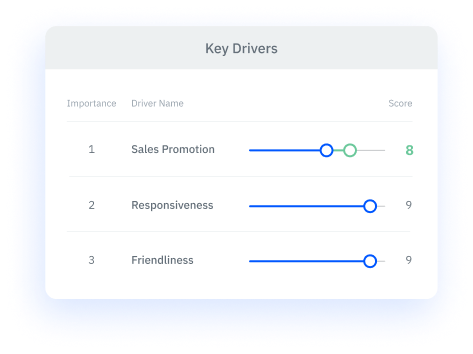Closing the Outer Loop with the Six Sigma Methodology
The Six Sigma methodology utilizes data analytics to identify areas for business optimization. This can be useful for CX leaders looking to improve operational performance and customer satisfaction.
Customer feedback is critical for helping your customer service agents tackle problems—whether closing the inner loop directly with customers or closing the outer loop with issues that keep surfacing repeatedly.
Organizations are typically quite comfortable tackling inner-loop programs. If you have agents that review and action customer feedback, and enough resources to contact unhappy customers, you’re off to a good start.
However, closing the outer loop means addressing structural issues, and this is where it gets a bit harder. Here is how the Six Sigma methodology can be used as a template to help CX leaders close the outer loop and address systemic issues.
What Is Six Sigma?
Six Sigma is a methodology that uses data analytics and statistics to analyze business processes and services to understand how they’re performing and how they can be optimized. The objective is to increase business outcomes, such as the customer experience, by reducing defects and improving services and processes.
Since collecting and analysing data is at the core of both Six Sigma and CX programs, it struck me that they seem like a natural fit.
What Is the Six Sigma Methodology?
The Six Sigma methodology is a combination of two underlying processes: DMAIC and DMADV.
DMAIC process is define, measure, analyze, improve, control.
DMADV process is define, measure, analyze, design, validate.
The latter process is only used whenever a business has undergone optimization but is still not meeting metrics. When this happens, Six Sigma professionals will utilize the DMADV process as a means of redesigning processes within a business.
The DMAIC process is the standard and most utilized process. Because of that, it will be what is used when providing a deep explanation of the Six Sigma methodology.
The 5 Steps of the Six Sigma Methodology
Six Sigma follows the DMAIC process made up of the following steps:
- Define
- Measure
- Analyse
- Improve
- Control
We’ll go through these one by one:
Define
The first step is to prioritise the pain points that you want to tackle as a business. With Six Sigma we typically ask 3 questions:
- Is there a gap between the current process and the customer expectations around that process?
- Is the cause of the issue understood?
- Is the solution known?
The gap between current processes and customer expectations should be found in your voice of the customer data. By analyzing this data along with measuring the key drivers of your main business metric, you will be able to identify what issues are causing the most dissatisfaction across your customer base.

After analyzing your VoC data and key drivers, you may come across issues where you already have the solution. For example, you may have tried to understand why your business wasn’t doing well with 18-28-year-old customers anymore. But, after digging deeper into the data, you discovered that those customers weren’t invited to sign up for a revamped customer loyalty program. This is an issue you have a solution for, and it can be fixed quickly.
On the other hand, if you uncover another issue not meeting customer expectations in which you do not have a solution or do not know the root cause, you can utilize the Six Sigma Methodology.
Measure
The measurement step is where a baseline is established. You can do this by using your existing customer experience metrics. If you have the data to identify the problem, you can use the same data to create a baseline on which improvements can be compared.
Analysis
This is where it gets interesting—the analysis phase involves identifying the root cause, which is critical if you want to find an effective solution. We typically start with brainstorming different ideas and then once we settle on some hypotheses we can test, we can then check if we have the data available to us to check this hypothesis or if we need to collect more data in order to test it.
It’s important to understand the true root cause. It’s quite easy to find correlated themes that do not directly cause the issue. Driver analysis on both structured and unstructured data can help with this process.
Improve
Once you have identified the root cause, it’s time to come up with solutions to address it. This is where customer experience consulting can be useful. Customer experience consultants will help you compare and contrast ideas to fix your problem.
Once we’ve settled on the most promising ideas, it’s time to start A/B testing the concepts, which involves trialing the solution(s) with test groups and then comparing the performance against a control group.
In the end, there’s typically a cost benefit analysis to understand which action would have the most impact. This needs to be contrasted against the relevant investment.
Control
Once the best course of action has been identified, it can be implemented. Once it is implemented you can track the improvement. Pearl-Plaza’s reporting studio makes this easy by giving you the ability to track changes in your customer metrics, create and share reports, and identify the most important actions that need to be taken to improve your business.
Utilize the Six Sigma Methodology with Pearl-Plaza
Often companies struggle with putting a framework in place to tackle the outer loop in an effective manner. Six Sigma is one method that can be utilized to put a structure in place that can be used to root cause structural issues, identify potential solutions and identify the most effective one. Pearl-Plaza’s services will help you close the loop most effectively while using the XI Platform. With the guidance of our Strategic Insights team and the tools within the Pearl-Plaza platform, no CX problem cannot be fixed. To see what we can do for your business, schedule a demo today!






